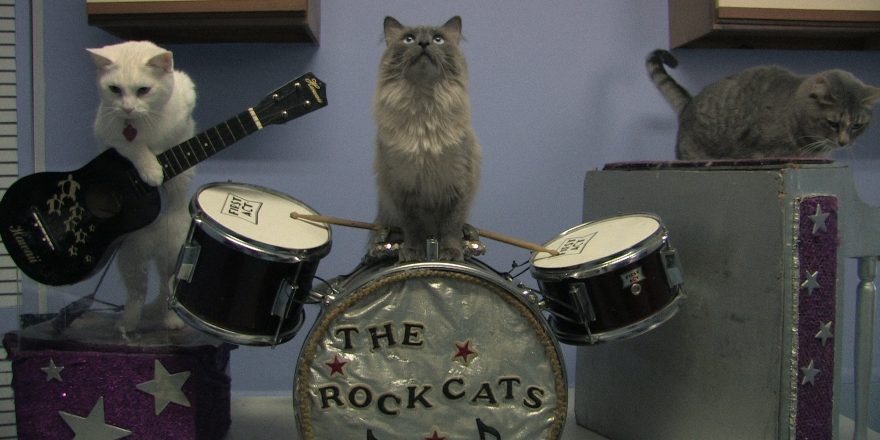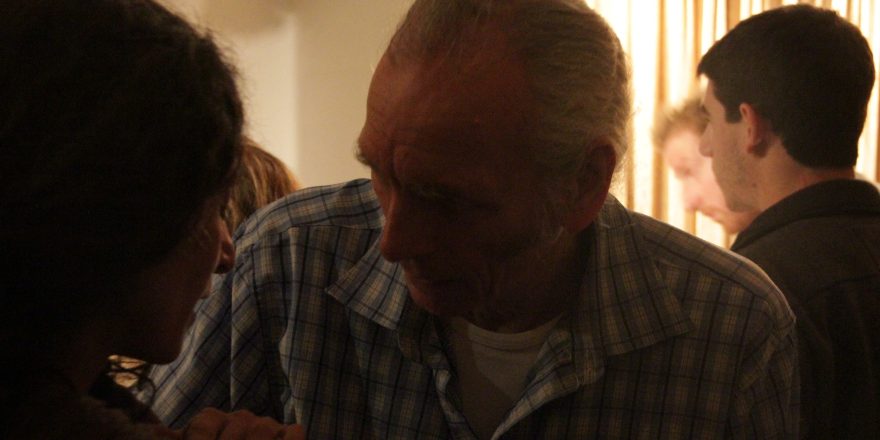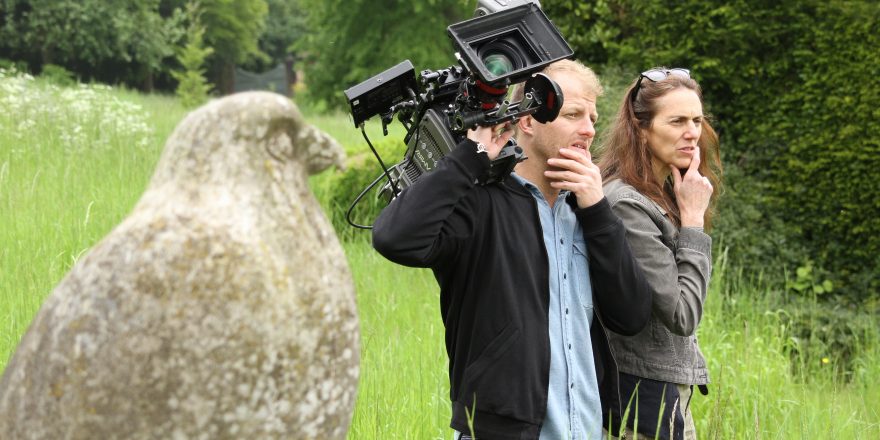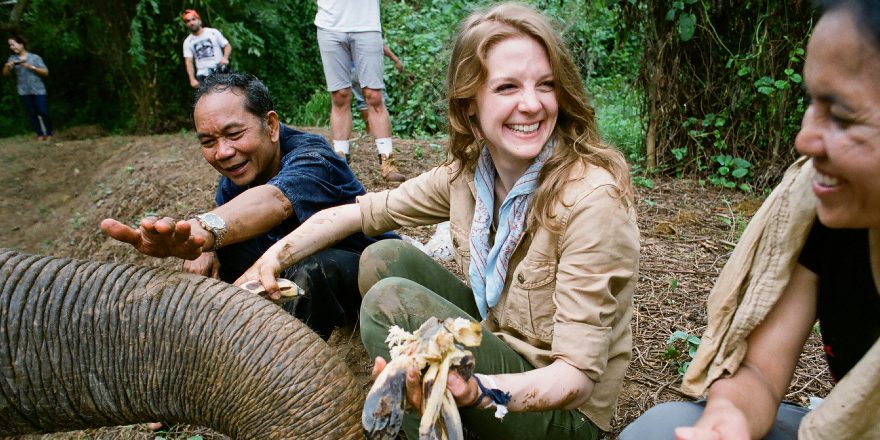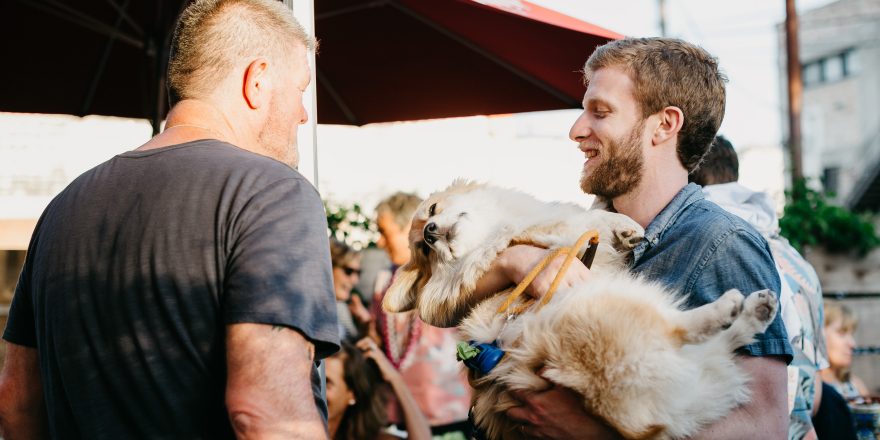What does it mean for creators to exist in an era where art is hastily consumed and disposed of? This is what I contemplated last year as I sat in one of New York’s premier independent movie theaters, the Sunshine Cinema on East Houston Street. I was viewing Acrocats!, my first feature-length documentary, for quality control before its New York film festival premiere. For decades, the Sunshine had been a cornerstone of the neighborhood, screening independent films not often accessible in mainstream theaters, but recently there were rumors of it closing due to rent hikes; prime real estate for developers.
As I watched the first flicker of my documentary on screen, I was struck by the impermanence of it all. After spending years on this project, and with a premiere date in sight, I realized I hadn’t considered what comes next. I sat in a theater that would one day be a condo or weight room, looking at a film that would eventually end up in a digital dumpster.
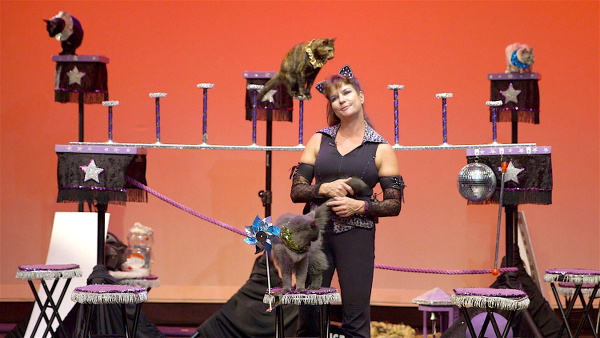
My feature-length journey began six years ago when I heard about Samantha Martin, a talented animal trainer who had quit her job to follow her dream of creating America’s first traveling cat circus, the Amazing Acrocats. Samantha built makeshift circus props in her living room, training domestic cats to perform tricks and play in a band. Gradually she began traversing large- and small-town America, performing with her troupe wherever she could book shows.
Upon beginning production, the fleeting relevance of what would be produced didn’t cross my mind. I was younger and arguably naive. Unconcerned with monetary compensation or generating acclaim, I just wanted to collaborate on a documentary with Samantha. A sense of purpose took care of itself.
I observed that although Samantha was a seasoned trainer and animal behaviorist, there would inevitably be growing pains as she attempted to build the impossible, and gain financial footing. The show’s sets that years later would become sparkly and polished were then sparse, faded, hastily put together. The cats would often decide to resist doing their tricks mid-show, running away from Samantha’s outstretched arms or into the crowd. It was fantastic.
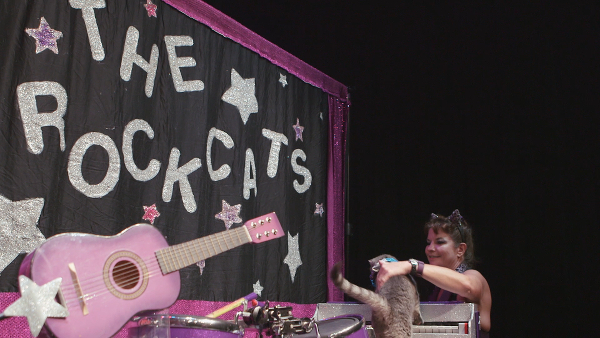
As I shot the film on a semi-outdated borrowed camera with minimal crew due to budgetary constraints, I worked a day job to finance this work. The first few years felt exhilarating as I traveled the country filming the progression of the circus. Enamored with the show, I didn’t consider the difficulties of production; the adrenaline of first-time feature filmmaking was propelling me forward. I enjoyed Samantha’s sense of humor, her sarcasm and wit. She reminded me of friends I had grown up with.
As the years passed, working odd jobs to support an independently funded film outside the industry felt questionable. I moved to the East Coast in an attempt to further my film career, while occasionally flying back to the Midwest to film Samantha and the circus. As I attempted to craft a narrative from 60 hours of footage, I tried not to drown in cat tricks and portraiture, and hoped I could do justice to Samantha’s story.
I surrounded myself with filmmakers. Our conversations continually focused on which film festivals we should aim for, which barometer of success would feel like enough. Of course, this fixation on perceived achievement makes sense. The stakes are high if projects don’t make money or one’s livelihood is on the line. While this is how business operates, life was becoming less fulfilling when every waking moment felt like a sales pitch. Or maybe the setting I had positioned myself in was igniting doubts that I had recklessly brushed off years earlier? Either way, I felt depleted.
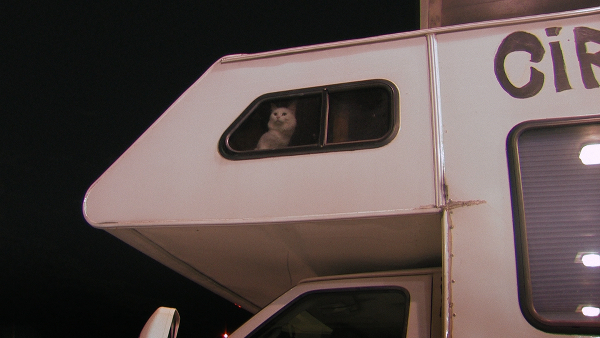
I was losing sight of what had drawn me to this story in the first place. Panic ensued, manifesting itself in a range of concerns. I had no clue how to piece this story together. I worried that I was too much of an amateur to complete the film. If it wasn’t screened at a certain film festival or distributed by a certain company, I would consider myself a failure. I would not prove my worth in the industry. Instead of being thankful for the privilege of creating, I was spinning out.
Meanwhile, as I watched Samantha’s circus develop, I observed an incredible testament to endurance and patience. After years of nearly sinking financially, she was building her fanbase and playing larger, more polished venues. Perhaps most impressive were her unshakeable priorities. Half the time her cats were performing to perfection, the other half, they were still running away from her and into the crowd, generating chaos. Samantha, however, embraced these moments and incorporated them into the show. “Now’s the moment in the show where we lower the audience’s expectations,” she joked onstage. It was clear that she prioritized the cats’ welfare over inhumane training practices and success rates, and the audience responded to this homegrown approach. After each show, she spent much of the day playing with and looking after her cats. She enjoyed the life she had created with her animals.
Considering Samantha’s show years later, I can now articulate why I love it. Her life is projected on the stage, imperfections and all, showcasing an existence built on attempts, not on 100 percent accuracy. If the show doesn’t work, at the end of the day, she still has a vibrant life with her cats. The show remains only a portion of her identity. Every maker could learn from her.
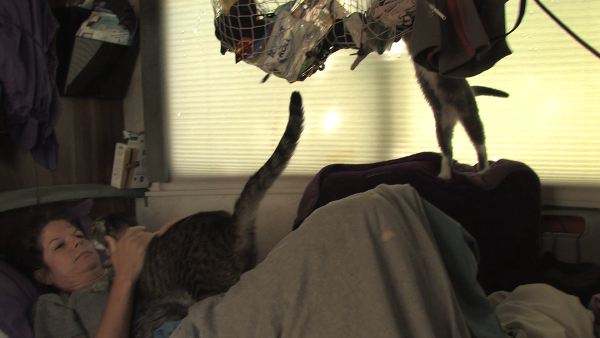
Fast-forward to a year after my festival premiere. As I write this, demolition is under way on the Sunshine Cinema, as developers are converting the space into condos. Although few will probably notice, a piece of New York City history is gone, yet another signifier of a changing approach to an industry of yesteryear.
Around the time the demolition started, I read that the once-prominent social media site MySpace had reported losing millions of songs, videos and photos posted by its users over a 12-year period. It was a clear sign of the diminishing value of archives in the digital era, which disappear when a platform ceases to care about them.
For many years, the idea of the “classic” cannon of films existed, a cinematic history to revisit; or “criterion” films that were deemed culturally important. Films would stick around and be discussed years later. I foresee a time soon when the “classics” are completely forgotten.
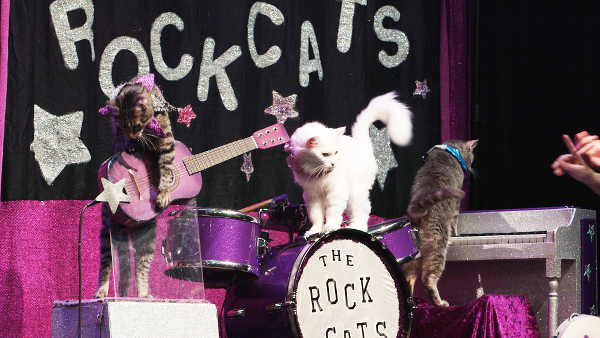
Today, the once-clear signposts of “making it” in the industry are gone. Whether a film premieres at Sundance, or is immediately released on VOD, it will soon be covered by layers of digital internet strata. Though the rapid disposal of works is disconcerting to some, I have recently learned to find comfort in this. As a digital storyteller whose previous work took years to produce and which may one day cease to exist, the stakes initially felt high. Recently, however, the finite space a piece of media possesses has moved me towards a more holistic approach to making. It therefore feels less important to worry about its context in the greater scope, especially as people’s preferred viewing mediums and attention continue to shift quickly. It just means that I must find a better reason to create than building a personal mythology.
As impermanence continually and rapidly changes arts culture, I feel less concerned about being perceived as an amateur, what traditional success looks like, or what building a legacy means, although I still hope for consistent opportunities to create. Mostly, I just want to stick around and enjoy telling digital stories for as long as possible; until our current iteration of digital storytelling is replaced by a futuristic equivalent made by robots and AIs, and written by computers. When that happens, hopefully I can help with their production. But if not, I will just need to redefine my idea of happiness, and pet a cat instead.


